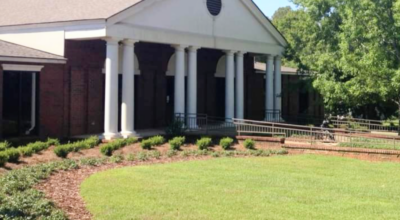Graduation rate below state average
Published 4:35 pm Thursday, June 13, 2013
Statistics released by the Alabama Department of Education Tuesday revealed that the Butler County School system’s graduation rate was well below the state average.
The figures showed that statewide 75 percent of high school students graduated on time. In Butler County that number fell to 66 percent.
Greenville High School had the lowest graduation rate among Butler County’s three secondary schools at 61 percent. Both Georgiana School and McKenzie School graduated more than 80 percent of their students during the cohort period, with Georgiana posting a rate of 86 percent and McKenzie posting a rate of 81 percent.
Butler County Schools Superintendent Darren Douthitt said he is concerned about the numbers, but believes the formula used to determine the graduation rates needs to be tweaked.
“This doesn’t so much measure the number of students a school is graduating as it does the number of students who graduate on time,” he said. “For example, if a student fails a course and has to make it up during the summer of his or her senior year, he or she does not count as a graduate because he or she would have finished high school after the four years that are measured.”
That’s a change from previous years.
Before a student was counted as a graduate if he or she graduated from high school in five years or less, and it counted students that received a completion certificate rather than a traditional diploma.
The cohort graduate rate, first used in 2010-2011, tracks a group of students from ninth-grade enrollment through 12th grade and measures the number of students who graduate on time with their class.
The formula used to determine the rate essentially adds in any students who transfer into the class during the four-year period and subtracts any students who transfer out of the class during that period who enrolls in another school. Students who drop out, fail a grade, miss a year of school for personal or health issues, or who seek GEDs are not counted as graduates and negatively impact the graduation rate calculation.
Douthitt said he would like the Department of Education to recognize students that graduate after completing a course in the summer or finish the Second Chance Dropout Recovery Program, which offers young adults ages 17-21 the opportunity to pursue a high school diploma or GED.
“This year’s number is solid,” he said. “The state isn’t going to change it, but I’m hoping that maybe beginning next year they will count the accomplishments of these students in the graduation rate total.”
Whether that change is made or not, Douthitt said the school district must do a better job of working with at-risk students.
“At Greenville High School we’ve added a graduation coach and a social worker to address some of the issues we have with at-risk students,” he said. “We’re going to have to double and even triple our efforts in that area. Once a child starts to consistently miss school, or falls behind in a course and fails, the thoughts of dropping out or not graduating begin to creep into their heads. Making sure that doesn’t happen starts when they are in the ninth grade.”
He said parents also play a role in the graduation rates for the schools and district.
“We need to convince parents that their child is a commodity,” he said. “… I have exit interviews with students who plan to drop out and their parents. I’ve heard a number of times that because of the economy the student needs to be working to help support the family. I understand that. Times are tough. But we must make sure that children have the opportunity to graduate high school and ultimately pursue more education, and that starts in the home.”
While Douthitt isn’t convinced the numbers released this week are accurate, he said the bigger issue is finding better ways to serve the students who are not graduating.
“We can’t let those students who are at risk of not graduating slip through the cracks,” he said.





